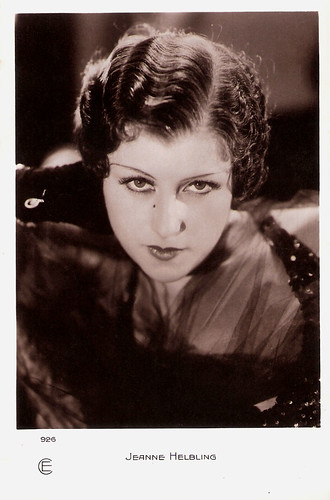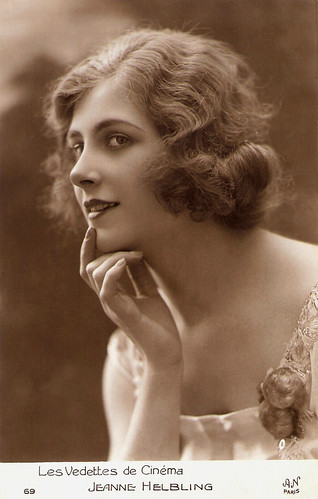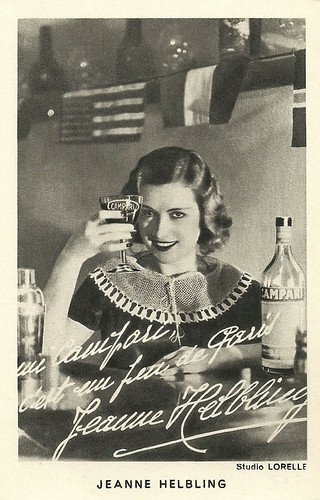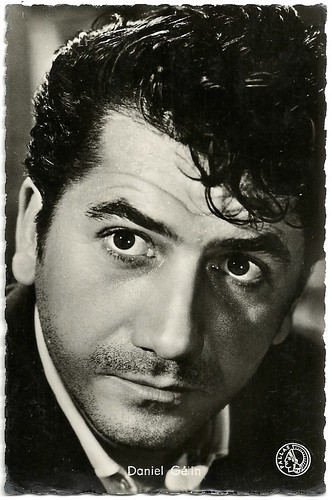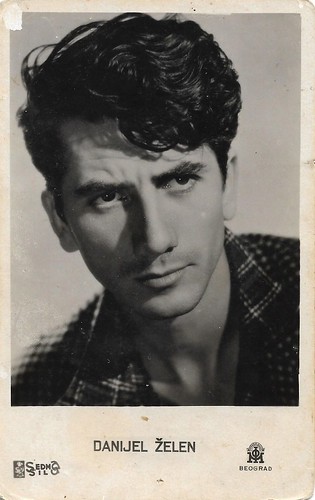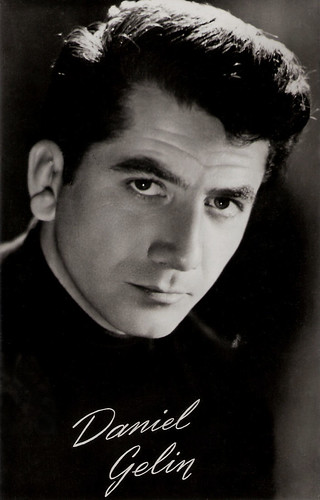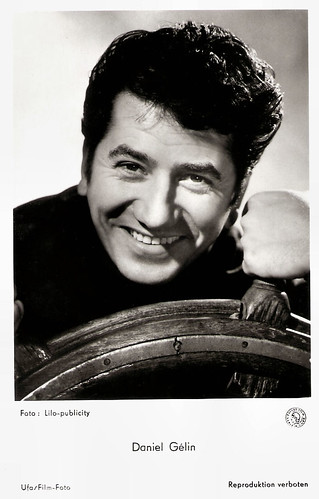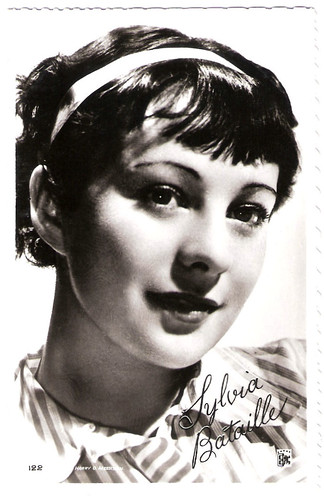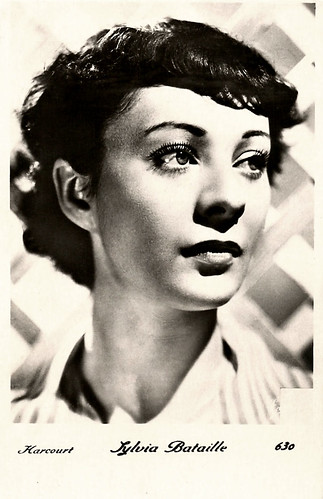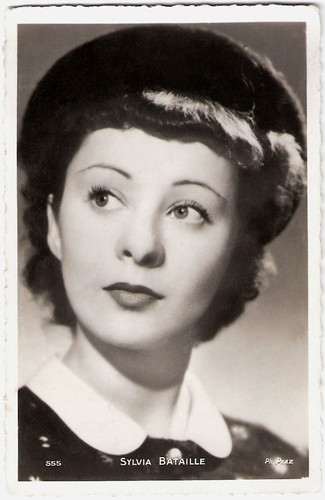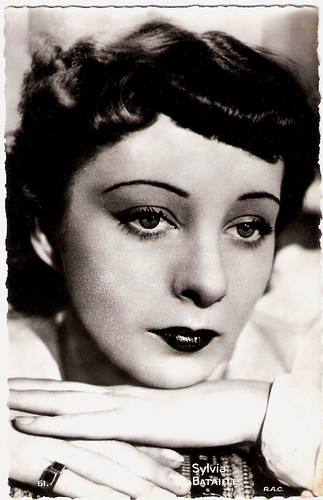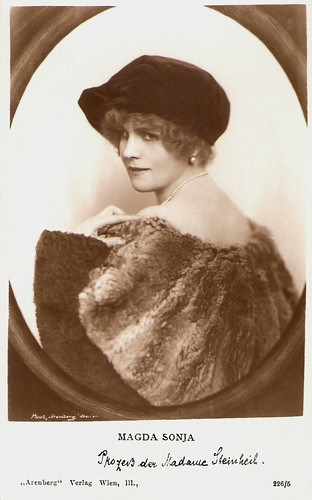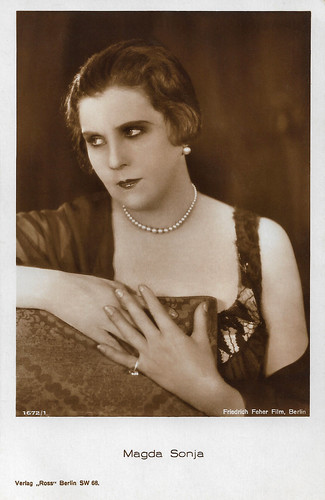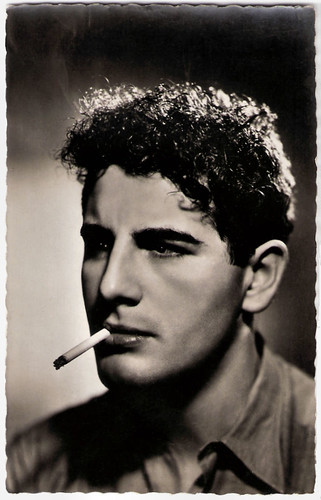
French postcard.

French postcard, no. 78. Photo: Cinéma de France.

French postcard by Ed. Chantal, Rueil, no. 18 B. Photo Burgus Films. Burgus Films was a French film production company, most active in the 1940s and 1950s. Chevrier starred in e.g. the Burgus production Andorra ou les Hommes d'airain/Andorra or The Bronze Men (Émile Couzinet, 1942).

French postcard, no. 807. Photo: Film C.F.C. C.F.C. stood for Compagnie Commerciale Française Cinématographique. Chevrier acted for C.F.C. in L'Emigrante/The Emigrant (Léo Joannon, 1940). On the poster of the film, Chevrier was depicted based on the same photo as used for this card.
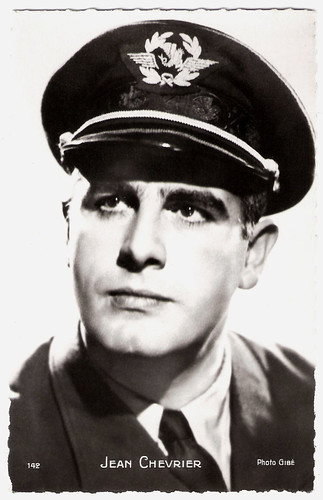
French postcard by Editions P.I., Paris, no. 142. Photo: Gibé.
Gigolo
Jean Chevrier was born in 1915 in Paris.
He made his first film appearance as a gigolo in the comedy Mademoiselle ma mère/Wicked Stepmother (Henri Decoin, 1936) with Danielle Darrieux. The next year he was seen in the classic film J'accuse/I Accuse (Abel Gance, 1937), and in Liberté/Freedom (Jean Kemm, 1937). In his first films, he was just credited as Chevrier.
He soon played starring roles in the adventure Trois de Saint-Cyr/The Three of Saint-Cyr (Jean-Paul Paulin, 1939) and the comedy L'Émigrante/The Emigrant (Léo Joannon, 1940) opposite vedette Edwige Feuillère.
During the Second World War, he played a part in Marcel Pagnol’s La Prière aux étoiles/The Prayer at the Stars (1941), a film that was never completed. Other films in which he appeared were the whodunit thriller Le Dernier des six/The Last One of the Six (Georges Lacombe, 1941), L'assassin a peur la nuit/The Murderer is Afraid at Night (Jean Delannoy, 1942 with Mireille Balin, Tornavara (Jean Dréville, 1943) and Falbalas/Paris Frills(Jacques Becker, 1945) with Raymond Rouleau.
During this period he also worked in the theatre with Rouleau, who was also a stage director. After the war, Chevrier would become an ensemble member of the Comédie Française.
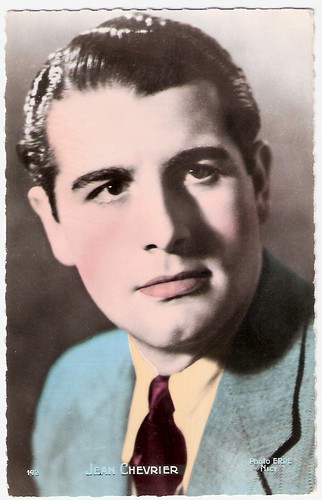
French postcard by Editions P.I., La Garenne-Colombes, no. 142. Photo: Erpe, Nice.
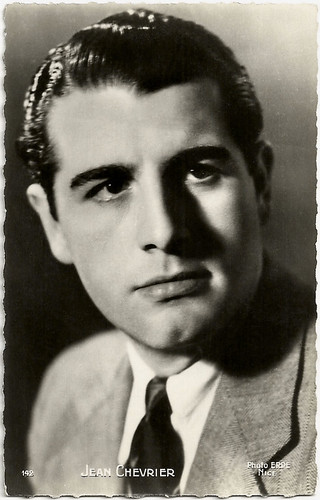
French postcard by Editions P.I., Paris, no. 142. Photo: Erpe, Nice.
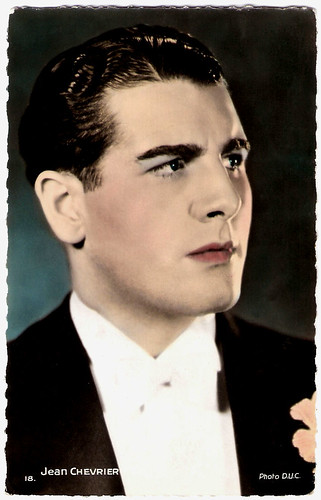
French postcard by Ed. Chantal, Paris, no. 18. Photo: D.U.C.
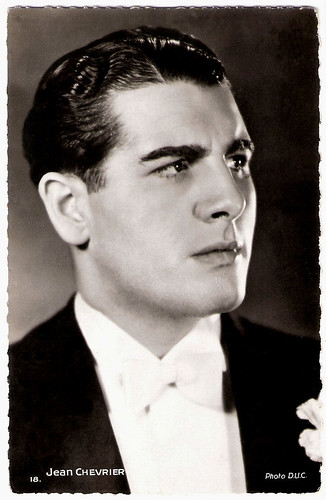
French postcard by Ed. Chantal, Paris, no. 18. Photo: D.U.C.
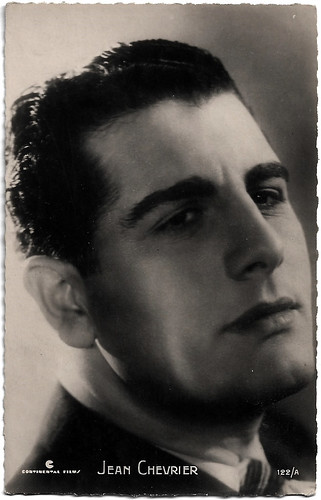
French postcard by Editions Continental, no. 122/A. Photo: Continental Films.
Marie Bell
Directly after World War II, Jean Chevrier starred as one of the Ludovics in the comedy Messieurs Ludovic/The Misters Ludovic (Jean-Paul Le Chanois, 1946).
This was followed by a busy decade, in which he appeared in films like Le Diable souffle/Woman of Evil (Edmond T. Gréville, 1947), Aux yeux du souvenir/Souvenir (Jean Delannoy, 1948) starring Michèle Morgan, La Maison dans la dune/The House on the Dune (Georges Lampin, 1952), Si Versailles m'était conté.../Affairs in Versailles (Sacha Guitry, 1954) and Napoléon (Sacha Guitry, 1955).
He also played in the Italian productions Donne e briganti/Of Love and Bandits (Mario Soldati, 1950), and Messalina (Carmine Gallone, 1951) with Maria Felix. His last film appearances were in Le Gigolo/The Gigolo (Jacques Deray, 1960) and Les Vierges de Rome/Amazons of Rome (Vittorio Cottafavi, Ludovico Bragaglia, 1961).
Later he was often seen on television in such productions as David Copperfield (1965), the Jean Racine adaptation Phèdre (Pierre Jourdan, 1968), the series D'Artagnan (1969) and Lancelot du Lac/Lancelot of the Lake (1970). His last TV appearance was in the series Les Rois Maudits/The Damned Kings (1972).
Jean Chevrier died in 1975 in Paris. He was married to actress Marie Bell. At the end of his life, he had a long affair with Jean-Claude Pascal. He was buried alongside his wife at the Monaco Cemetery in Monaco.

French postcard by Editions P.I., offered by Les Carbones Korès, no. 80. Photo: Qibé. Jean Chevrier, Michèle Morgan and Jean Marais Aux yeux du souvenir/To the Eyes of Memory (Jean Delannoy, 1948).
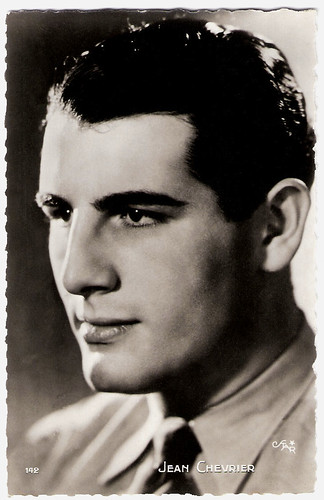
French postcard by Editions P.I., Paris, no. 142. Photo: Star.
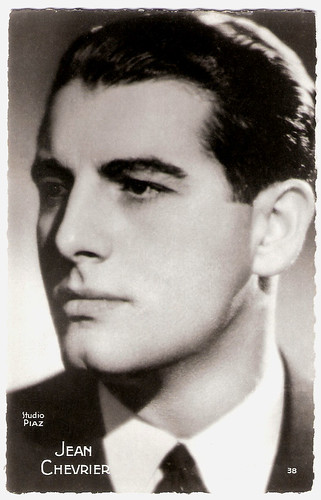
French postcard by Editions O.P., Paris, no. 38. Photo: Studio Piaz.

French postcard. Photo: Studio Harcourt.
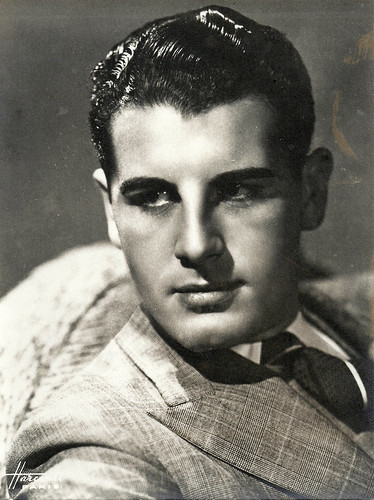
French postcard. Photo: Harcourt, Paris.
Sources: Wikipedia, and IMDb.
This post was last updated on 24 September 2023.
